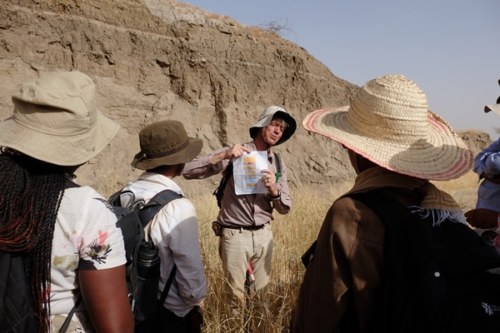
In the last week, we have been delving deeper into the geology of the Turkana Basin. This included seeking to understand how stratigraphic units (distinct layers of soil piled on top of each other which represent different time periods) are formed and how to interpret individual sedimentary strata’s in order to reconstruct past environments. On Tuesday morning, Dr. Feibel introduced the students to the description and measurement of sedimentary strata. Describing strata is especially important since it allows geologists to understand past environments and any traces from the past which may have been preserved in the sediments. For instance mollusks preserved in sandstone can indicate a river channel and identifying the specific species of the mollusk can help identify the approximate size of the channel since different species live at different depths and water flow velocity.
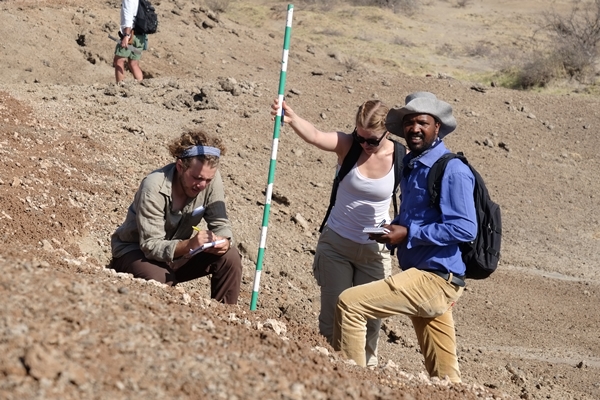
Tom, Ulla and Kifle analyzing their stratas (Photo: Deming Yang)

Lydia, Gill and Meghan plan on how to measure and analyze their strata (Photo: Lucy Njogu)
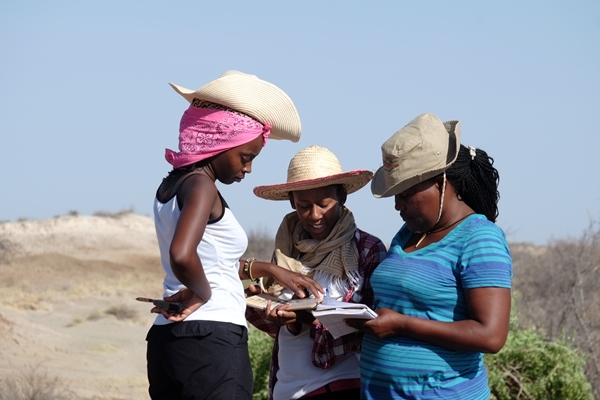
Ann. Georgina and PAuline analyzing soils from their stratas (Photo: Deming Yang)
In the afternoon, the students did presentations on their traces projects. Traces in geology are important especially in helping to reconstruct past environments as represented by the stratas. For instance, Tilapia fish nests preserved in a strata indicates shallow lake environment. The students identified traces from around TBI including footprints, animal dung and even burrows. They then deduced the trace culprits behavior from the trace and discussed the preservation potential depending on the environment in which the trace was found. This exercise was important in helping them understand the preservation of traces (even fossils) and how to interpret traces in stratigraphic units in order to reconstruct the environment In which they existed and how they were preserved.
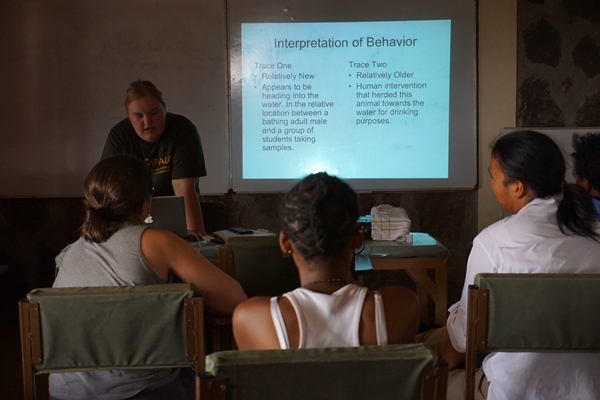
Meghan explains behaviour traits from her footprint traces (Photo: Rosie Bryson)
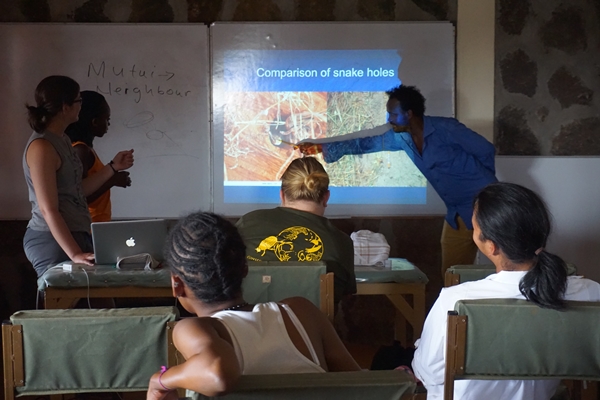
Gill and Ann explain how their trace compares to snake holes while Kifle points out the characteristics on the picture (Photo: Rosie Bryson)
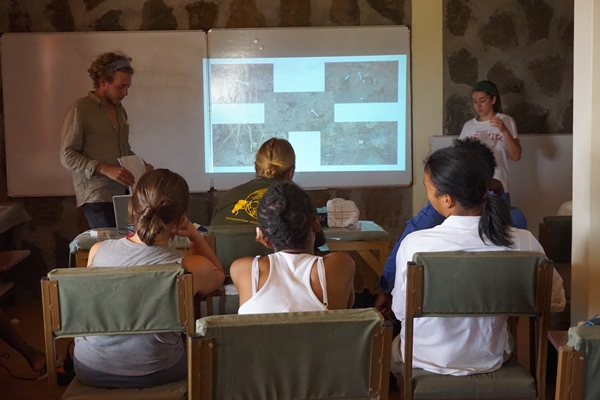
Tom and Lydia explaining their foot print traces (Photo: Rosie Bryson)
The highlight of the week was the Trip and camp at Koobi Fora. We Left TBI early on Wednesday morning and had our first stop at Il Alia river (a seasonal river). Dr. Feibel explained the stratigraphy of an outcrop by the river side, after which we had our lunch. We headed to the fossil Elephant site after lunch. The fossil elephant (Elephas recki) has a shelter built around the area where it was excavated and we learnt from Dr. Feibel that the shelter was constructed in order to protect the fossils from the elements for better preservation. The shelter also helps protect the fossils from theft and vandalism. These are examples of some of the issues which scientists have to deal with in protecting their finds. After this we headed out to the Koobi Fora base camp where we swam in the lake and later went to our camp site where the TBI staff had already pitched the tents for us. The students enjoyed the 2 nights camping out in Simbiloi national park since it was a different environment where they could interact with nature more closely than they can at TBI.

Our camp in Simbiloi National Park. (Photo: Rosie Bryson)
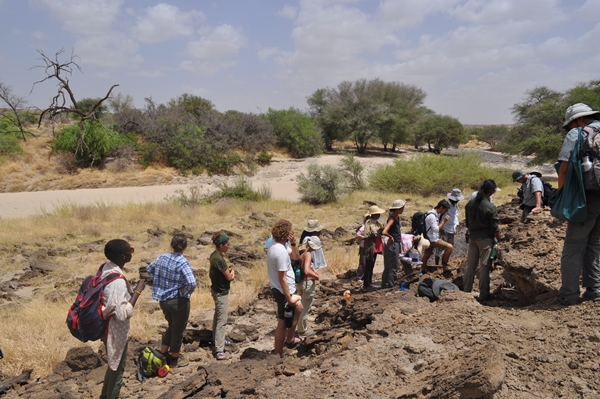
Dr. Feibel explaining the strata at Ilalia and what they represent through time (Photo: Lucy Njogu)

The Koobi Fora base camp (Photo: Deming Yang)
On Thursday the students were introduced to the stratigraphy of the Plio-pleistocene and Holocene deposits around Koobi Fora. In the morning , we hiked out to Area 102 which has a rich archeological site (the iron village) where students were able to find pottery shards, identify cairns and think about what they may represent. Here, the students also learned how to use the Brunton compass to measure the strike and dip of geologic surfaces which is very crucial in geological mapping , interpretation and analysis of how strata’s are superimposed onto each other. Here the students were also able to see the kind of environment which hyena’s live in and how they interact with their environment since the area was full of hyena traces.

Dr. Feibel Explains the general stratigraphy of area 102 (Photo: Lucy Njogu)
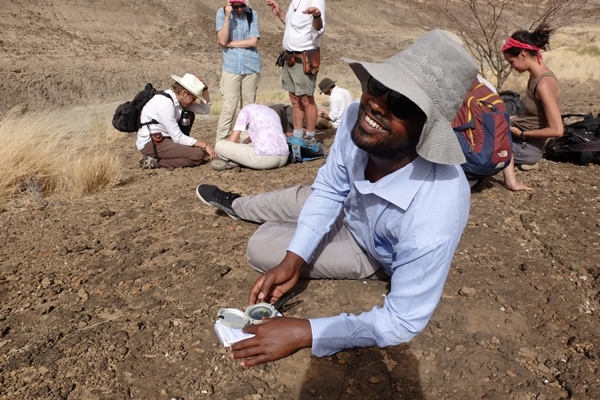
Happy Kifle after he successfully measured the strike and dip of the surface (Photo: Deming Yang)
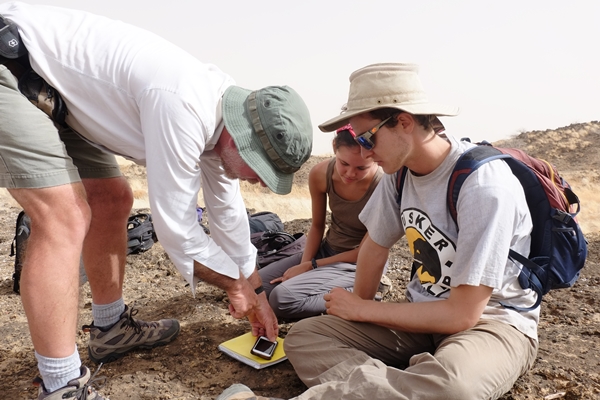
Dr. Feibel demonstrating to Nick and Regina on how to measure strike and dip (Photo: Deming Yang)
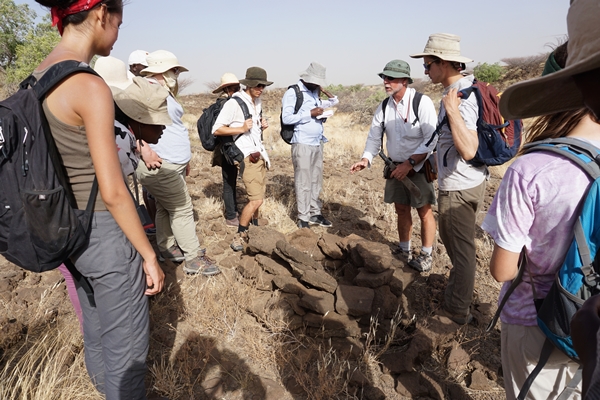
Dr. Kimbel explains on a goat cairn where the community hides young goats from hyenas (Photo: Lucy Njogu)
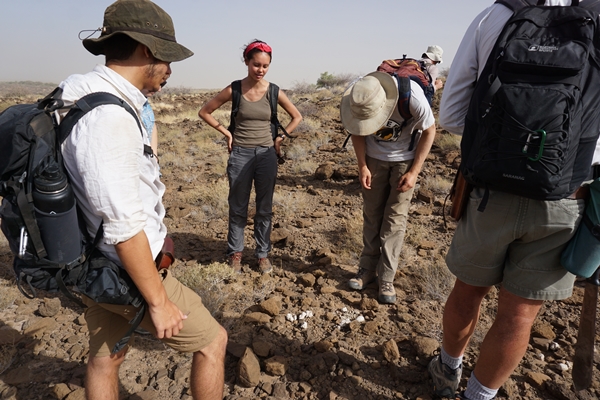
Nick, Regina and Matt tying to identify hyena species using hyena dung (Photo: Rosie Bryson)
On Friday morning, we broke camp and set out for our return back to TBI. We stopped at area 104 where many hominid fossils have been found before and students tried their hand at fossil hunting. None of us was lucky enough to find a hominid fossil, but in the end, we were Lucky to find some bone harpoons in the Holocene deposits.
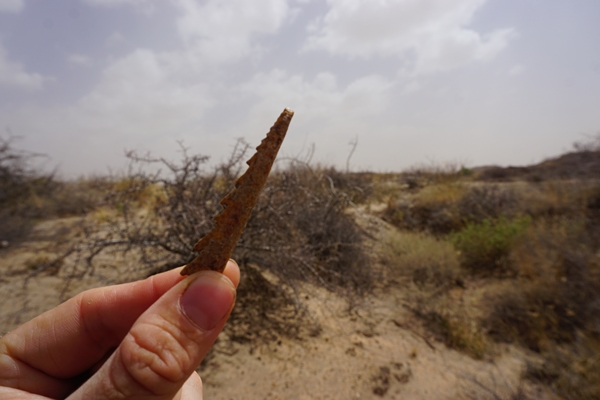
Bone Harpoon (Photo: Rosie Bryson)
We are looking forward to the start of the Vertebrate Paleontology module come Monday next week. Stay tuned!





